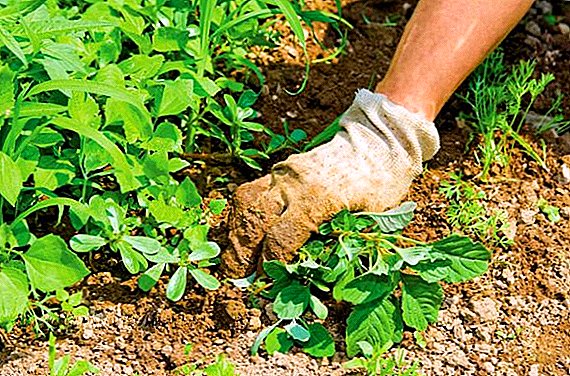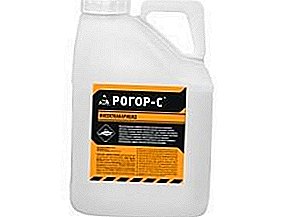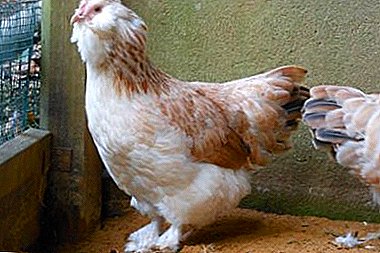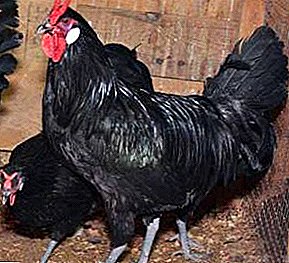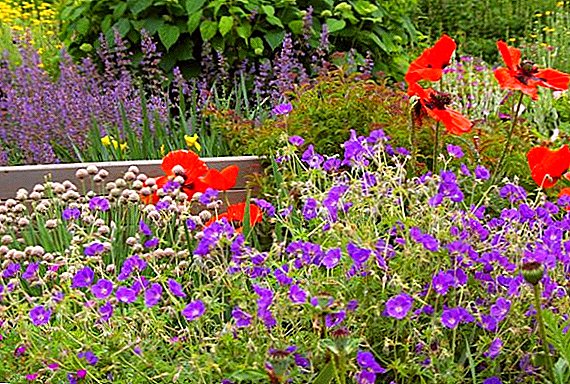
Grow a healthy crop of carrots - the goal of every gardener. However, getting good root vegetables is possible only if you follow a number of rules for the care of crops. About these and many other rules for the care and cultivation, we will discuss in this article.
In addition, you will learn about all the stages of the cultivation of this delicious and healthy vegetable. We share the most useful secrets of cultivation with our readers.
The main tasks after sowing and growing vegetables
To do this, you must perform a number of actions:

- Rolling in. Accelerates the process of swelling and germination of seeds by increasing the contact of planting material with soil and moisture. It is made immediately after sowing planting material in the ground.
- Soil loosening. Allows you to avoid the formation of an earthy crust, which reduces the access of oxygen to the plant. Before the emergence of shoots produced surface loosening. When the first shoots, loosening is carried out already at a depth of 4-6 cm, then -10-12 cm
- Weeding. A threat to the full development of creating weeds. Weeding avoids the oppression of root crops with unnecessary plants.
- Moderate watering. Watering is done as needed. Carrots do not like overmoistening. From an excess of moisture, active growth of the foliage and branching of the roots begins. And stagnation of water leads to rotting.
The gardener's further task is to get a healthy harvest. At this stage, the following measures are taken:
- Thinning seedlings.
- Fertilization.
- Mulching.
- Moderate watering.
How to care for crops in open ground?
To grow a healthy crop of root vegetables in the open field, you must follow a certain sequence of actions.
Harboring
Covering is performed immediately after sowing in the ground, this allows you to accelerate the germination of seeds. As a covering material is used:
- polyethylene film;
- special covering fabrics;
- dry grass or foliage;
- tree branches.
Sheltering saves crops from birds and other animals that can ruin the beds.
Thinning

- First thinning is carried out after the appearance of the third true leaf in the plant. Between plants leave a gap of 2-2.5 cm.
- Second thinning produced three weeks after the first. It is carried out in order to avoid the intertwining of young roots because of the crowdedness. The gap between the roots becomes 4-4.5 cm.
Thinning rules:
- Before each thinning should water the beds.
- Pull out extra plants in the upward direction to avoid damage to the neighboring. Violation of the integrity of the main root can cause deformities of the root.
- Sprinkle the formed gaps with soil in order not to attract a carrot fly.
Top dressing
Carrots are fed three times per season:
- The first fertilization is carried out in 3-4 weeks after the first shoots. For it, a solution of mullein or urea with potassium magnesia is used (the solution is prepared in the proportion of 10 liters of water + 1 tsp of urea + 1 tsp of potassium magnesia).
- When the sixth true leaf appears, potassium fertilizer is applied: a solution of potassium sulfate at the rate of 2 tablespoons per 10 liters of water or ash solution - 0.5 liters of ash per 10 liters of water.
- The third time fertilizer is applied in early August. Rows spill dry with ash, and then loosen the ground.
Watering
Experienced gardeners do not water the first shoots of carrots for 1-2 weeks. Forced thirst causes the plant to deepen the roots. Further watering of young plants should be carried out with warm water to a depth of 15-20 cm as needed.
Loosening
Loosening the soil by 5-7 cm after each irrigation will help avoid oxygen deficiency.
Mulching
Dry mowed grass is used as a covering material for mulching.. Moisture does not evaporate through it, weeds do not grow well, the impact of the environment is significantly reduced.
Mulching contributes to the enrichment of soil mineral and organic fertilizers.
Errors
Common mistakes:

- Wrong watering. Stagnant water or excessive moisture leads to rotting or branching of the roots. The other extreme is the complete absence of watering during droughts. As a result, the roots can crack or dry out completely. Proper watering is watering as needed by the plant itself.
- Incorrect feeding. Carrots cannot be fertilized with fresh manure, its taste and appearance deteriorate at the root. To avoid improper feeding, fertilizer should be applied according to the schedule.
- Incorrect thinning. If you do this procedure at the wrong time, you can get a poor-quality crop. In cramped roots intertwine with each other, and with excessive "freedom" grow in breadth and grow coarse. Tastes significantly deteriorate. Therefore, all thinning should be carried out on time.
Getting a good harvest of carrots is not easy. Growing this culture requires a lot of strength, knowledge and skills. However, if you properly and timely take care of it after sowing, you can get a healthy and high-quality harvest, even for novice gardeners.


